Report with Integrated Systems Europe - what you missed in technology if you did not get to ISE-2015

An interactive bar counter reacts to glasses and knows how to display ads, for example, offers to try something new
ISE is one of the largest exhibitions in the world for AV specialists and system integrators. Here they show new hardware like screens, projectors, LED solutions and various other displays and their components. ISE takes place in the corresponding strange atmosphere of Amsterdam. All of Europe comes here, plus many of our compatriots. For comparison - on the same past American “Infocom” Russians there were about a couple dozen, not 2-3 hundred.
Well, let's show you what I remember most in particular, the recently released laser projectors. Well, the TV, which costs like an apartment.
Why all this is needed
As such, exhibitions like ISE are an opportunity to touch equipment live, about which before that you only read with the vendor in closed announcements (if you were lucky) or which is shown for the first time at all. Plus, see the good old stuff with a new interesting software. Over the past couple of years, by the way, this has become a feature of ISE - for example, on the Samsung stand there may well be a screen with some kind of impressive software solution for a small startup - and Samsung showed its technologies in relation to reality, and the startup got into the “big world”.
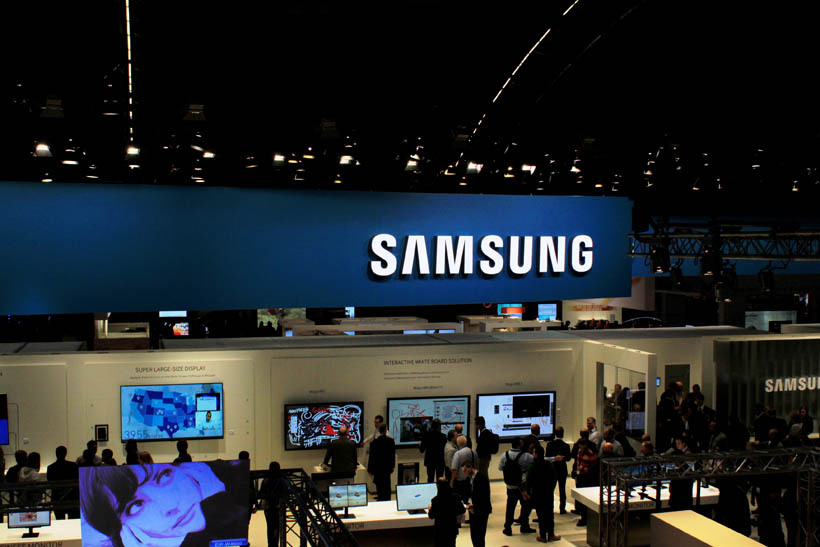
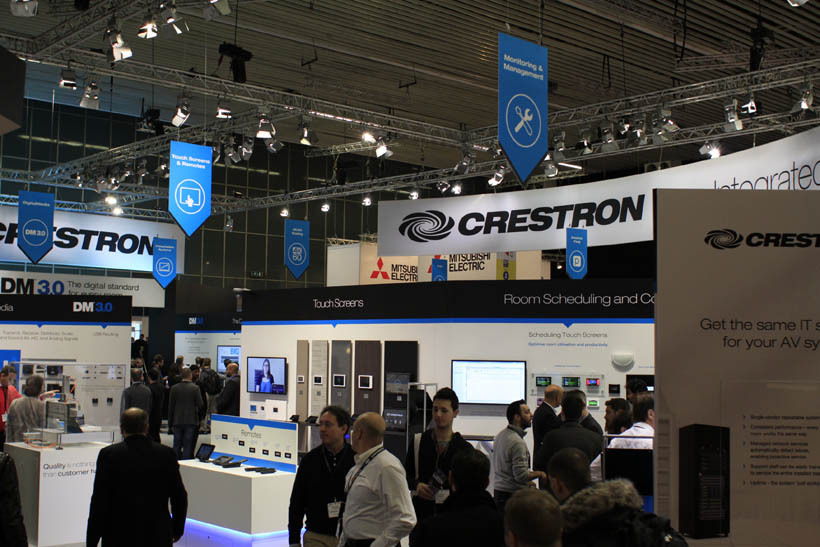
Regular stand (Crestron - one of the flagships of control and automation systems)
But the most important thing, of course, is communication. Everything is in one place, everything can be discussed with the vendors directly, if necessary, an appointment is made for a tripartite meeting, which is simply irreplaceable. From here, by the way, and traditions - at the end of the first day, for example, do not rush to leave - are poured at almost every stand to strengthen established business ties. Mitsubishi Electric has a herring and Hainiken at the booth at 16:00. So, in such an environment, you can immediately find out all the questions.
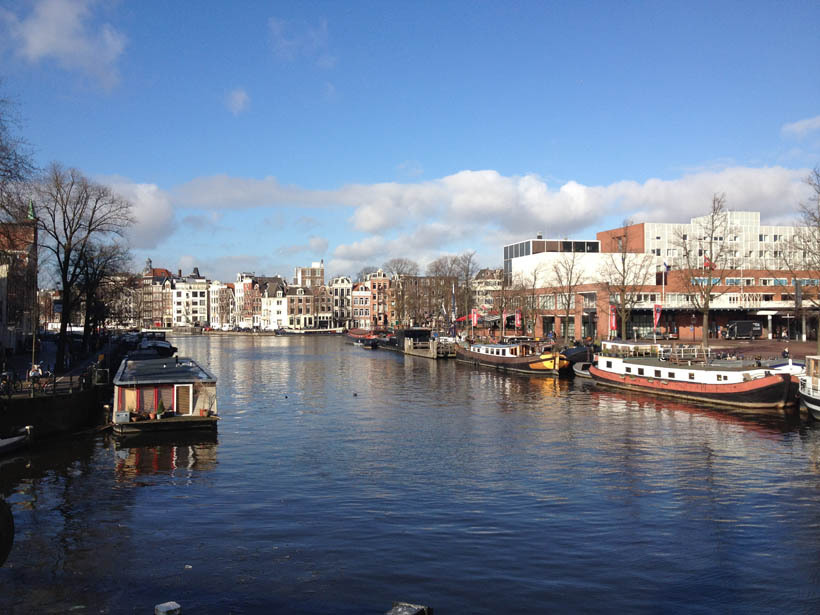
And the city is good.
In general, ISE is like the second new year for manufacturers, you can show new products and achievements. Great such a useful holiday for everyone. Every year the exhibition grows: I found it when there were 4 pavilions (they say, at first there was either one, or two) - and now there are about 12. There is

one of the pavilions of the exhibition
When the exhibition only began in 2004, it lasted only two days, then three, but next year it will be four. And this is obvious, yet such an international scale. And the main thing is that this is not taking into account the master classes and seminars that are read before the official opening.
This year, a lot of small startups began to come, who are exhibited in the corridors without a stand - it looks a bit ridiculous, but they come across very cool ones. As a rule, they are not very far away from the cash desk, they are bought by large vendors and develop the topic together. Of the examples, the same Chinese guys who made a seamless video wall (more precisely, the seams between the panels are filled with LED strips to match the color of the content). There is a budget solution for 3D mapping. Now any large project can be implemented without the use of expensive equipment. And many more interesting solutions.
What happened
At each exhibition, there is a tacit competition on the screens - who will bring the LED screen with less steps between the LEDs. This year, this "TV" won:
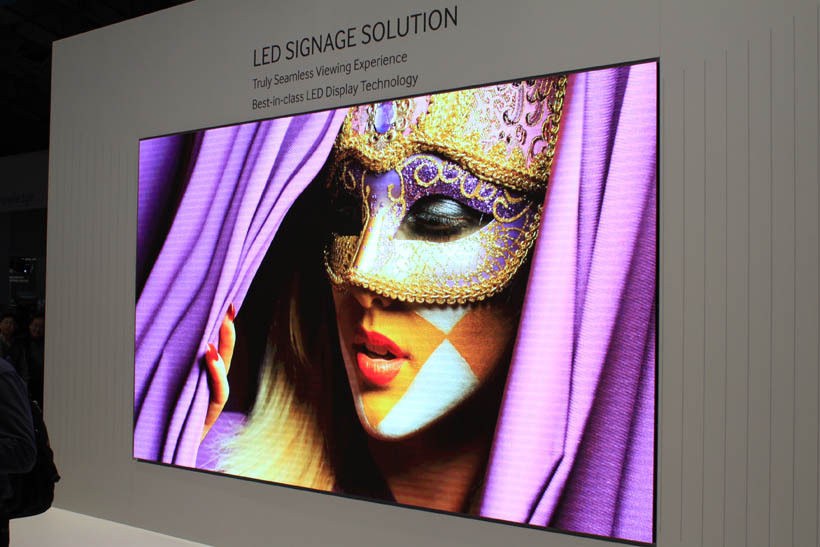
By the way, the same LED screen with a 1.1 mm pixel pitch from Samsung. They are often used as virtual fitting rooms, and in museums there are many more.
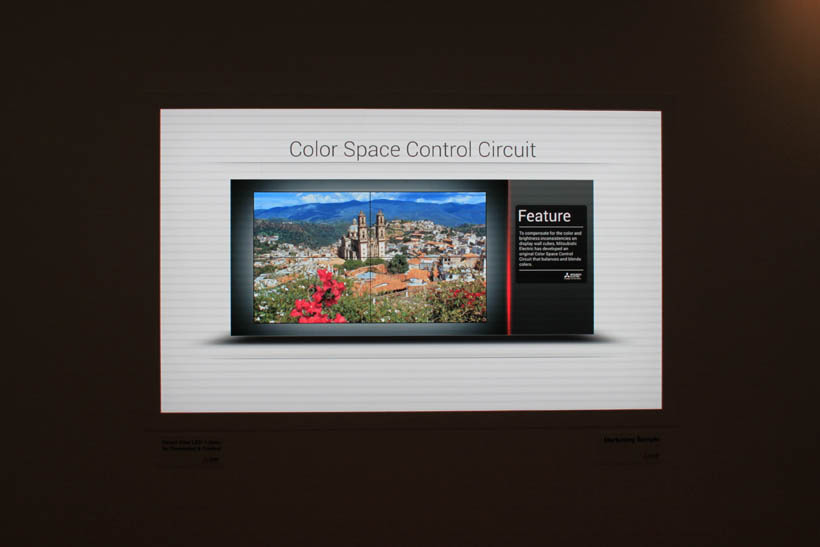
LED screen with a gap between the LEDs of 1.2 mm Mitsubishi Electric. We have the first application - situational centers and “command centers” for emergency situations.
And these are not LEDs, but the most expensive LCD panel of this size to date. If you have an unnecessary apartment in Moscow, you can sell it and buy this kind of thing for yourself in a hostel to watch football in 4K resolution:
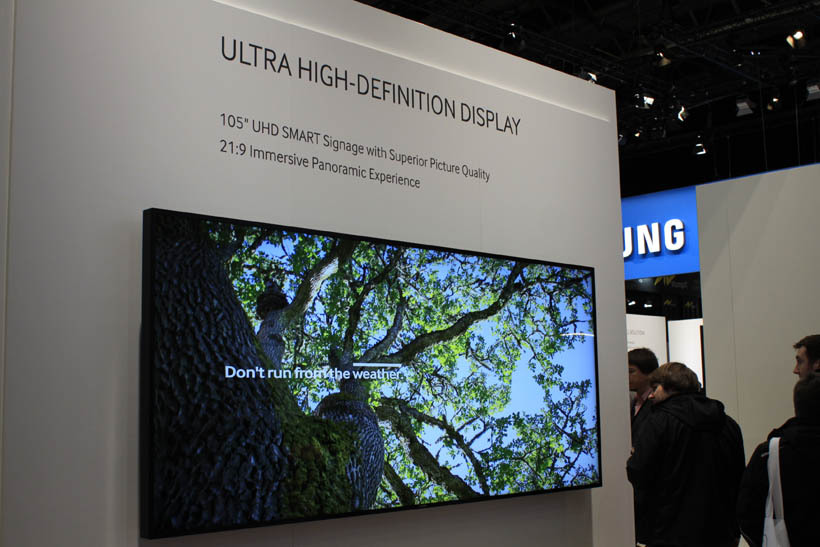
The most expensive LCD panel to date is Samsung (105 inches, 21: 9 sides). It works 24/7. Installation is possible anywhere. Most likely, it will be chosen by large corporate customers for VIP-meeting rooms, conference rooms.
Traditionally, many solutions for VIP meeting rooms. Here it is, for example, a monitor and microphones that can hide in a table. If necessary - leaving almost no marks on the surface:
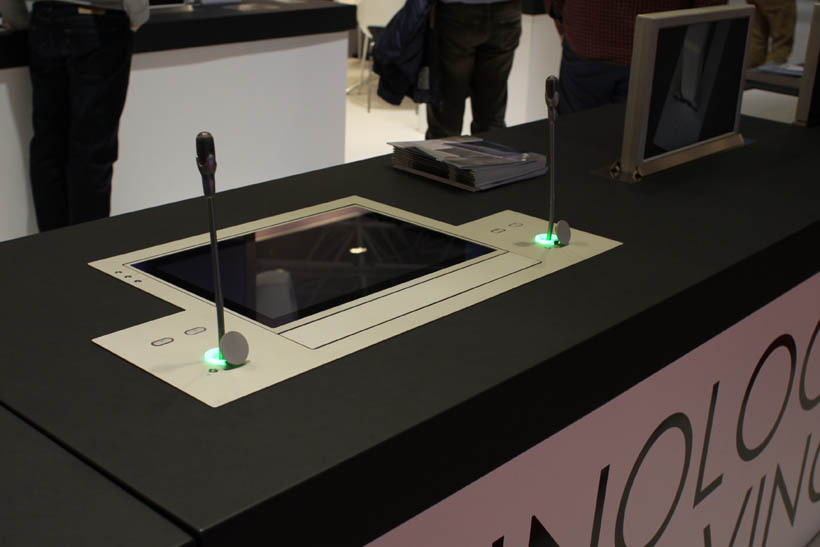
Motorized screen and microphones
Fun Robots of the Future (FUTURE ROBOT) with video conferencing and interactive content. Like last time, they pester visitors to the exhibition and try to get in touch. It is assumed that, for example, in a restaurant, a mobile robot waiter can independently approach the table, accept orders from customers via the touch interface, as well as pay using a smartphone or a credit card. They can also be used in advertising, retail, hospitality. We already laughed that in the offices they themselves would find the right employee and talk to him as if a colleague had approached. And in a smart home I’ll come to the bathroom myself with the words: “Lady, your husband is on the phone.”
The developer stated that "the FURO robot can guess the intentions of users by observing their movements, facial expressions and voice, and then start a corresponding dialogue, using in its process the expression of its" face ", its own movement and the necessary information."
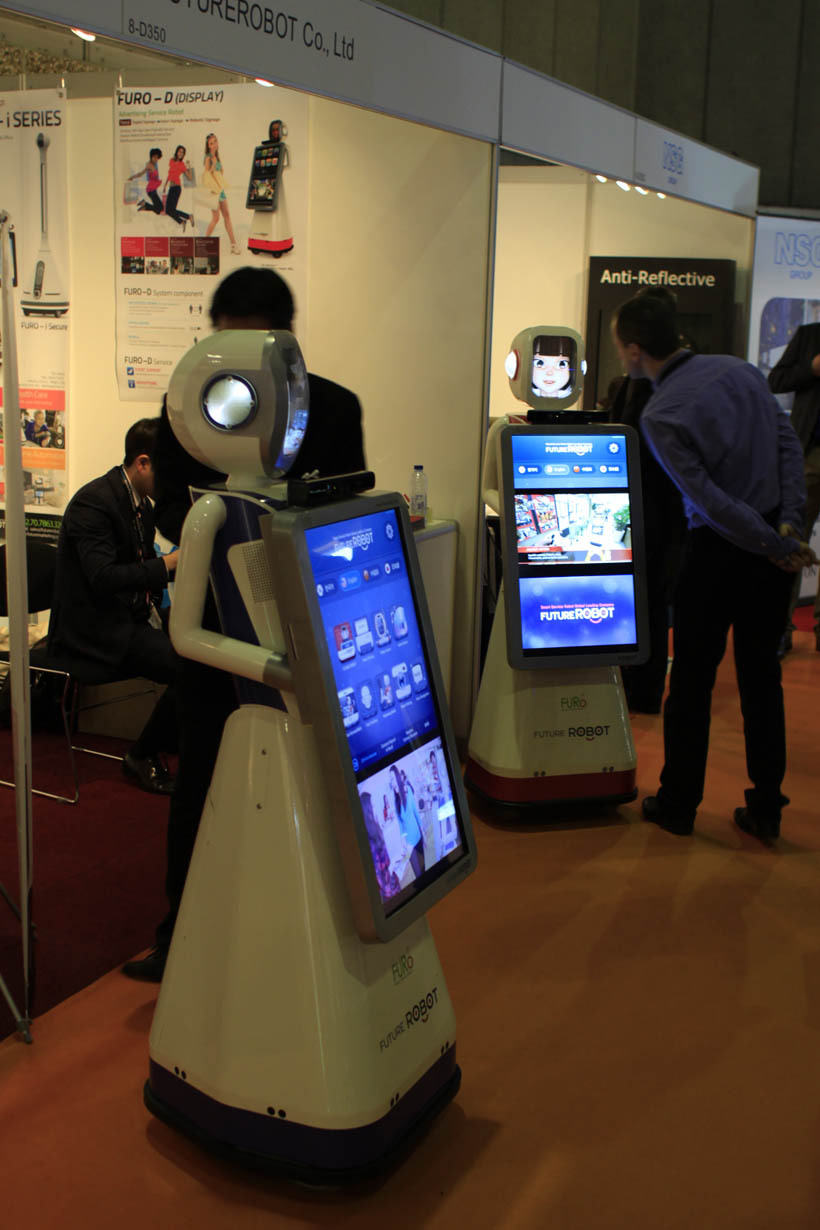
Fortunately, they have not yet learned how to turn door handles.
And these are the latest CISCO Telepresence systems:
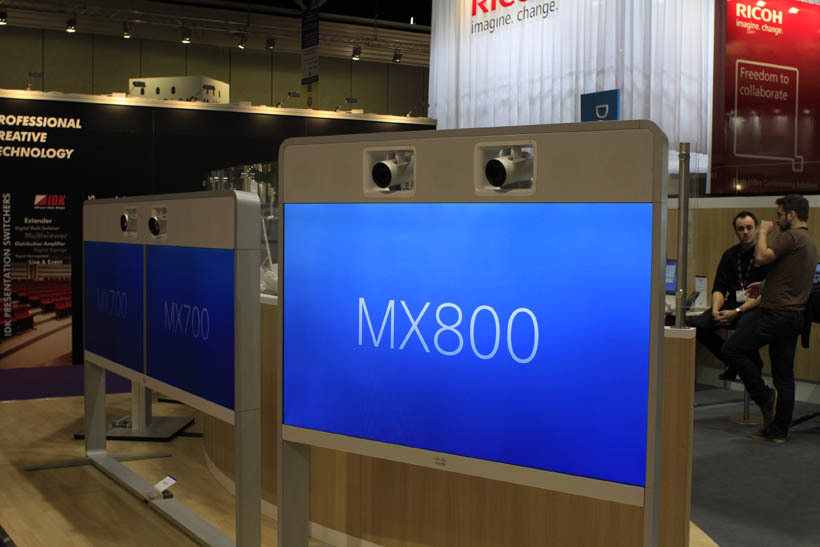
A new generation of integrated solutions, they have fallen in price by 1.5-2 times. A multifunctional solution that turns any meeting room into a videoconferencing studio. Built-in camera auto-guidance system for participants. Corporate customers and state corporations always have an interest in this.
Another special Olympiad is the “create the most crooked cluster” contest. In this case, the first place is taken by the technology of combining screens into one common one. This is not a novelty, but a very good design decision. Often this is needed in retail, for museums, hotel business, shopping centers.
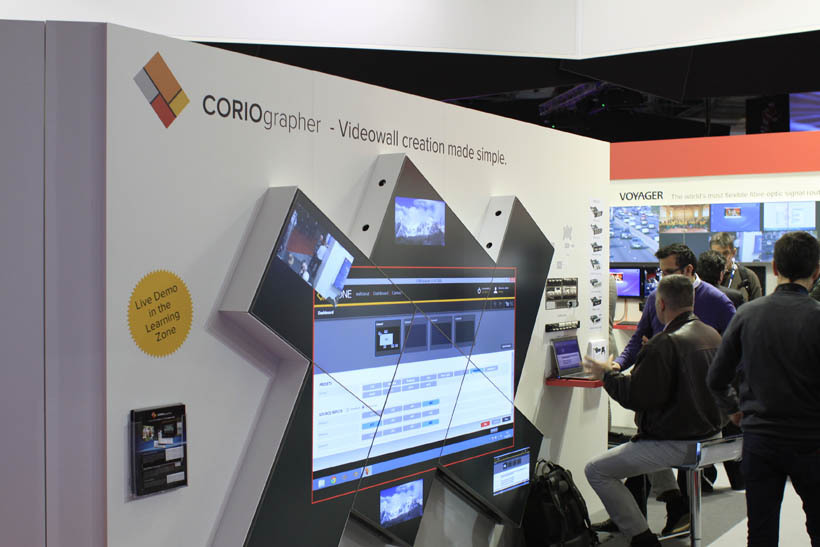
The ability of TV ONE processors to create creative video walls
LG brought hotel televisions. They are no different from ordinary ones, they are just perfectly tailored to the tasks of the tenant. The main thing here is software: greeting a new visitor, reminders, alarm clock, information about the hotel, city, services, etc.
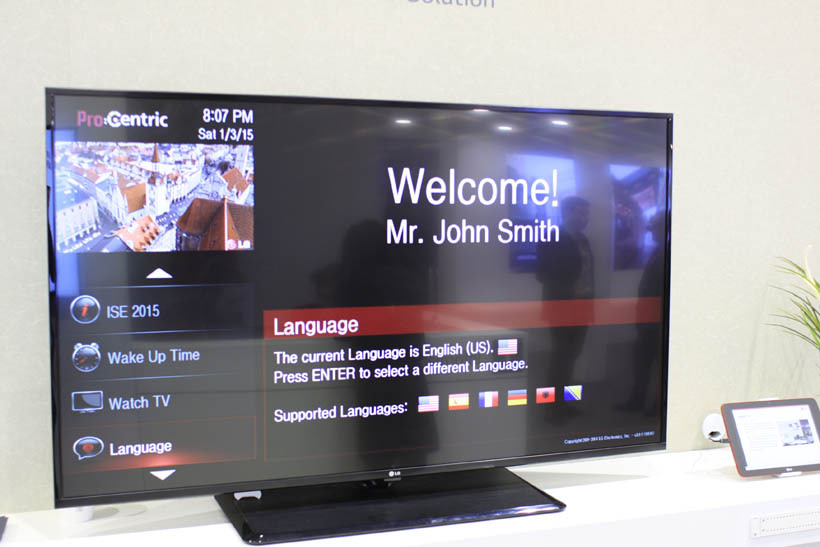
Hotel television in action at the LG booth
Here are all sorts of screens that are designed to appear near shelves with goods. They put the goods on top - and the screen explains what and how to do with it. Perhaps you have already seen such in stores with small expensive products, for example, in jewelry or boutiques with designer shoes.
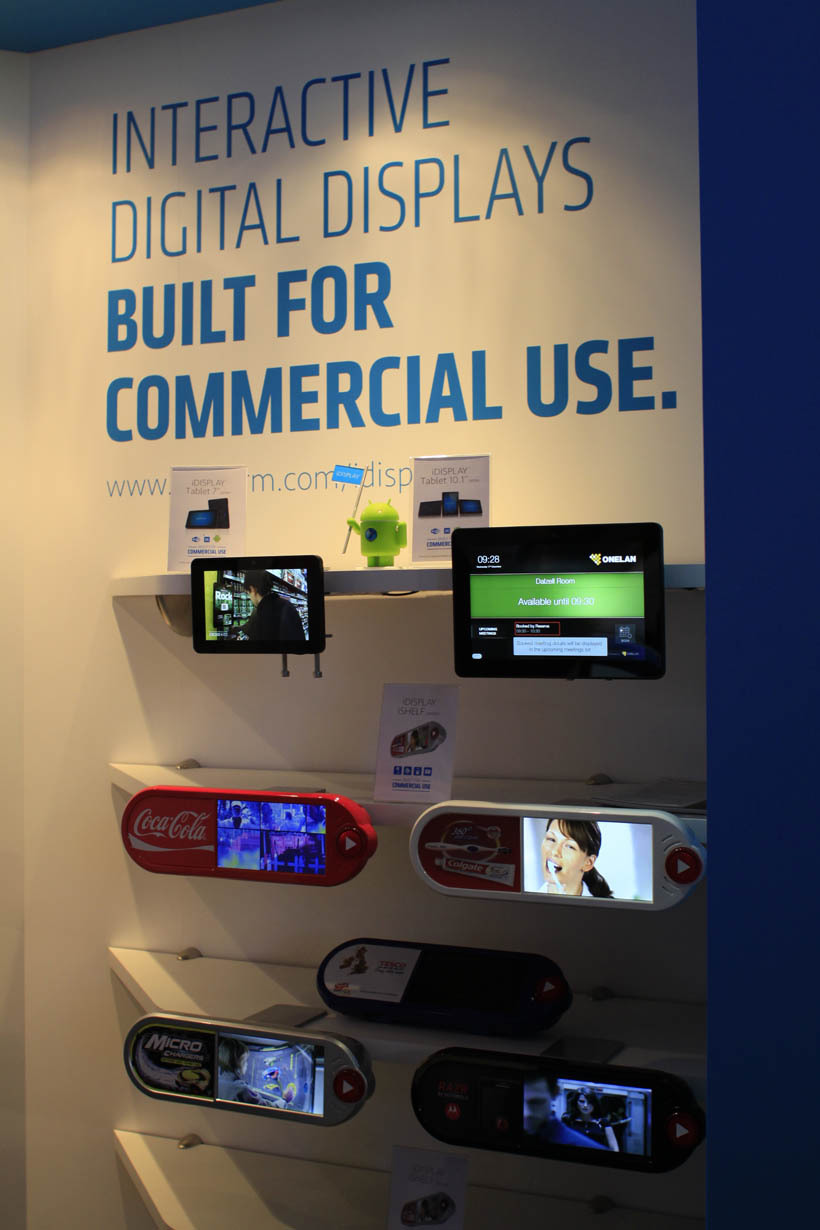
Interactive screens of various configurations for Digital Signage in retail
A large segment is occupied by engineering solutions for situational centers. Here is a classic:
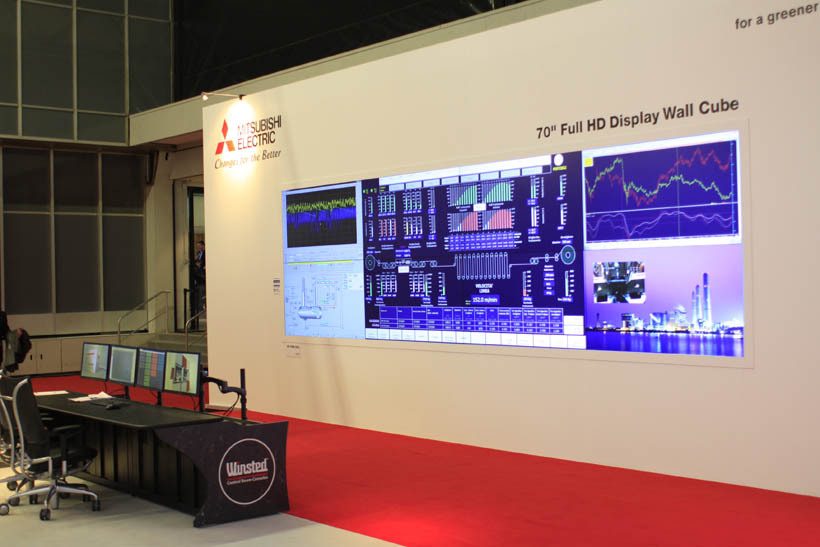
A classic control room with a display on Mitsubishi video cubes as well as a table for Winsted personnel A
special solution for the airport:
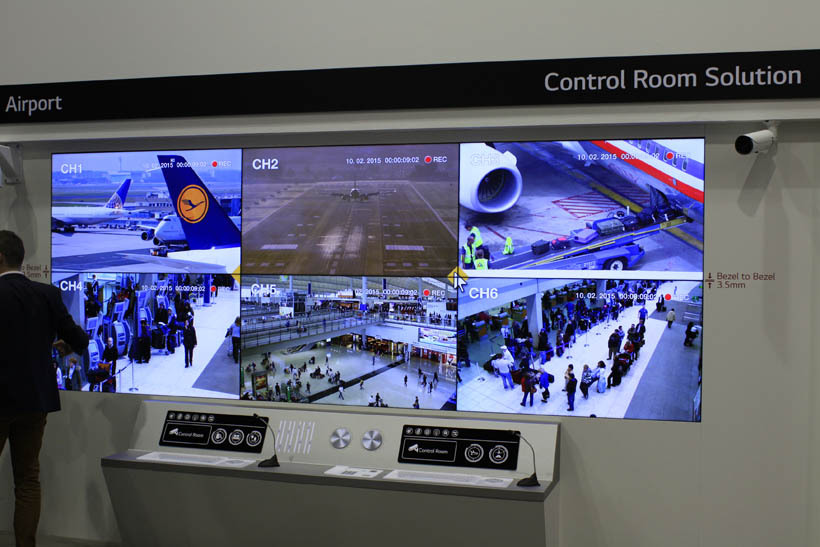
A solution for monitoring traffic (here, as elsewhere, software is important):

Ergonomically correct workplace for a situation center employee:
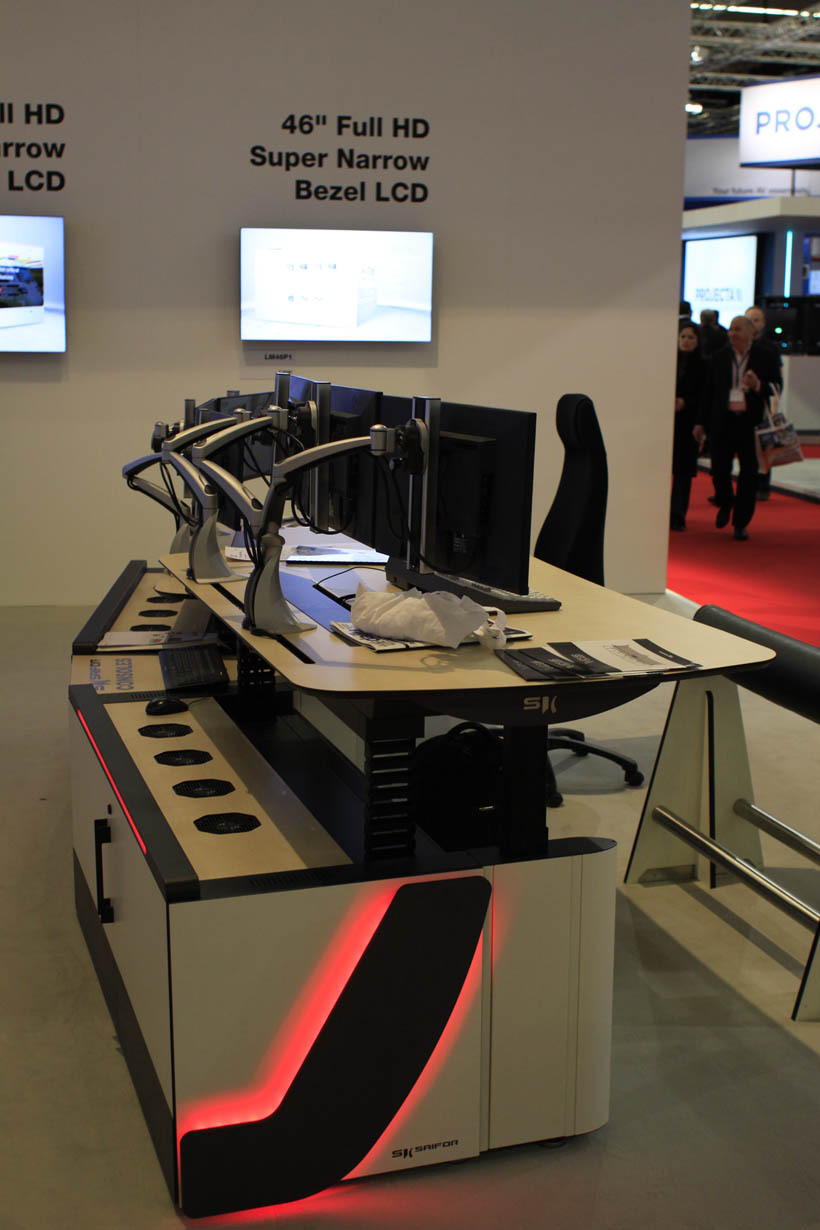
At the exhibition, you can communicate with some serious uncle, and then go to another stand and get into the theater. Here, for example, is a performance from Huawei - they always do something not very familiar to Europe. And on the Rock showed tricks.
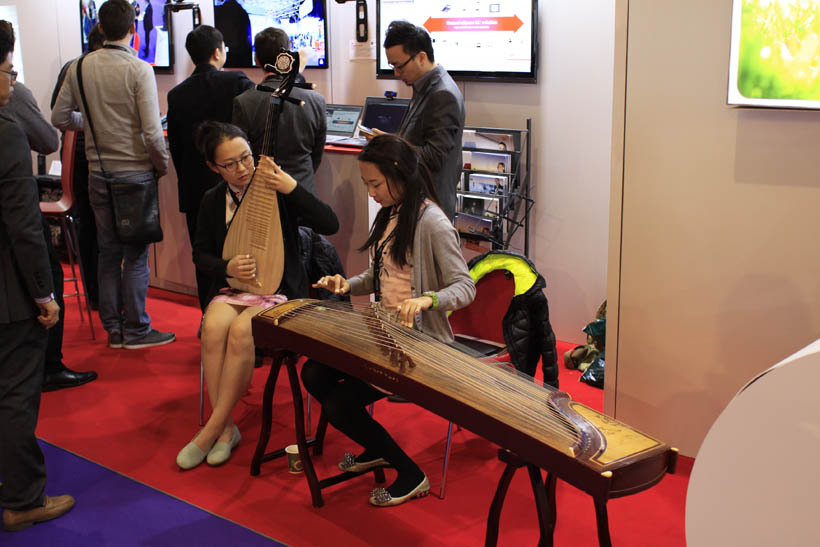
For those who like infographics on refrigerators, this transparent film is offered here. You can use it at home to show the hit points of the milk bottle, or you can use it at retail, where, in fact, drinks are advertised.
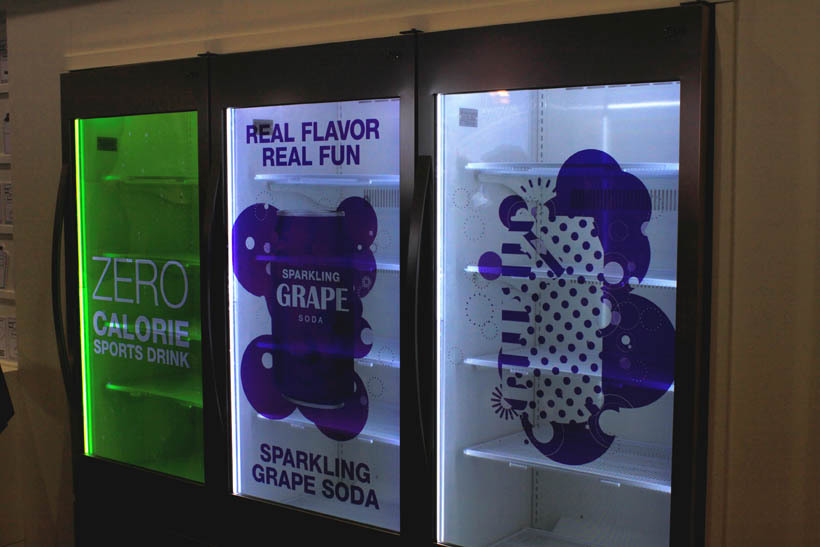
Transparent film with dynamic content for the refrigerator
We have such a long time. The frame is made of material according to the customer’s choice (even artificial stone), a 47-inch screen (IPS 1920x1080), a display case here is 1280 mm x 750 mm, the minimum depth is 250 mm, there are smaller options. Up to 32 touches at the same time, illumination with 3000Lum LEDs, built-in computer with * nix, Android or Win-application, more often - to scale the exhibits of the shop window and receive additional data on them (as in the photo). For example, this case is coins for banks. The coin grows in almost the entire window, under it shows the value and history.
We will return to the exhibition. Here are the traditional interactive menus:
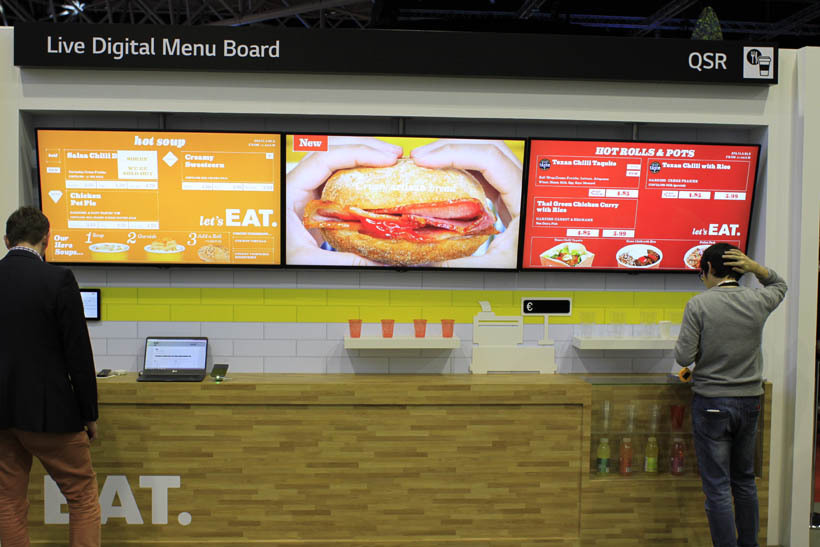
Here you can order products directly from the touch panel, and then pick up the ones already packed at the checkout:

Again the attraction “repaint the car with one click” - video mapping on Panasonic projectors:
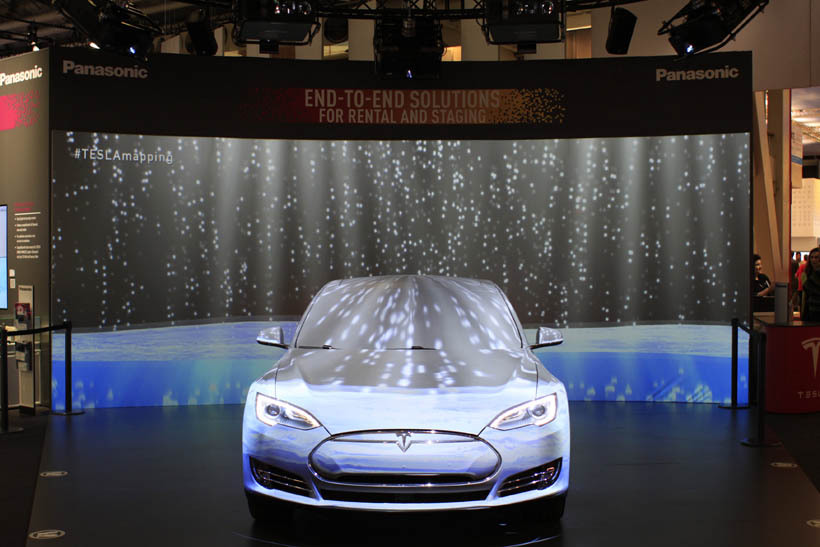
These installations are most often entertaining in nature: light shows, theater performances, sports shows, etc.
There are also such “household” things: They
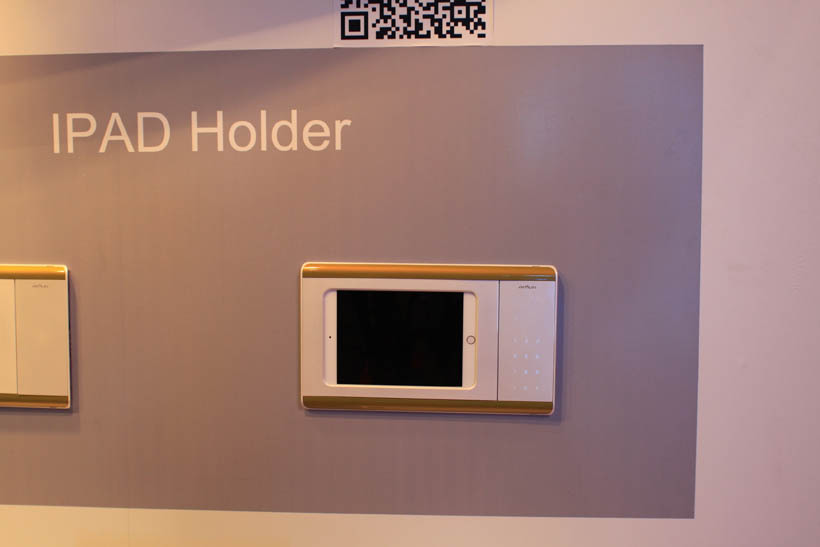
can be used as panels for meeting rooms that are attached to the wall in front of the entrance. The schedule is displayed on them. We already have similar ones at CROC.
And here is the main character - the miracle of laser projection, a terribly secret device. They promise a very vivid picture and an insane amount of hours of work:
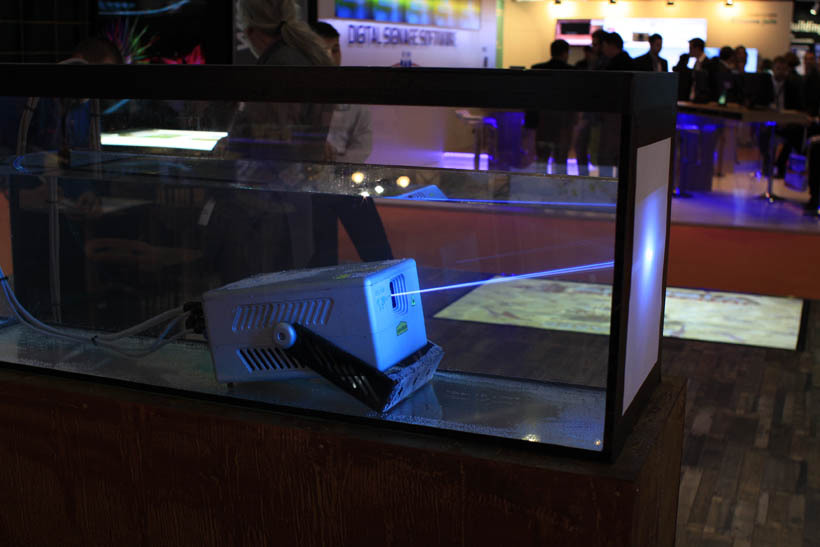
It can serve as an excellent alternative to expensive video walls. To be used for budget installations, for installations in large rooms, rooms with a complex layout - the projector can be twisted, tilted.
Actually, if interested, this is Sony, the 3LCD WUXGA 4000 lm model. 20 thousand hours without maintenance, 1920 x 1200 at 16:10, contrast 8000: 1, traditional adjustments, you can set the vice-rector to any angle (at least on the side), there is a built-in alignment of edges for stitching for extra-large images, it is possible to set a surface curvature map for image deformation compensation (this will be very important for projections in shopping centers), a special mode for medical images by GSDF and DICOM.
General
I was at ISE for the fifth time. In general, almost everyone who is somehow connected with display systems and screens wants to go to the exhibition in Amsterdam. Amsterdam causes not only professional interest, but also cultural and aesthetic. I immediately answer the most common question: I didn’t smoke, it didn’t work out corny. But right in front of our hotel was a building with a built-in cultural shock: on the first and second floor brothels, and above the apartment. Mistaking a door is dangerous to mental health.
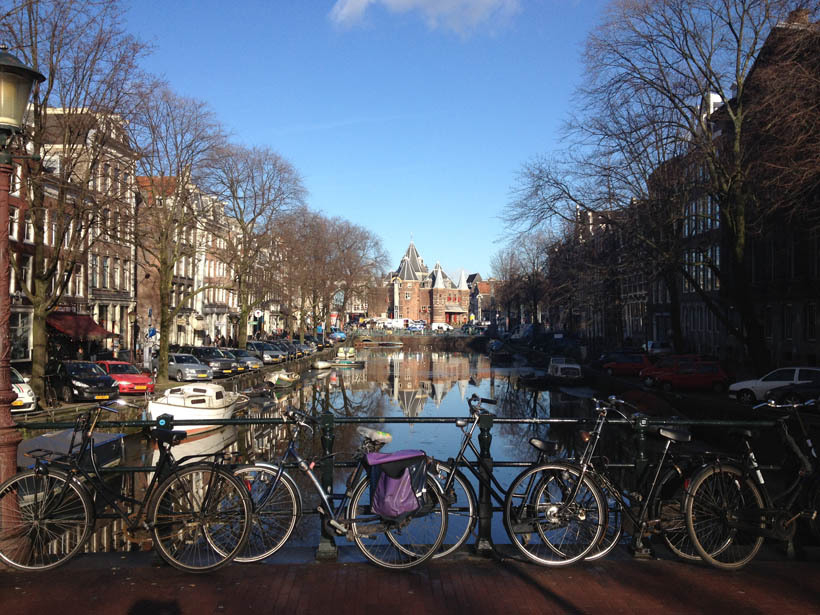
There is a light aroma of burnt rags in the air, distant laughter is heard.
In Amsterdam, everything is quite expensive, especially at the current rate. Breakfast, for example, is 15 euros, and it includes a croissant, coffee and juice and ham. Experienced colleagues showed a supermarket "for rogues and Russians" Hema, where you can eat already for earthly 1-2 euros.
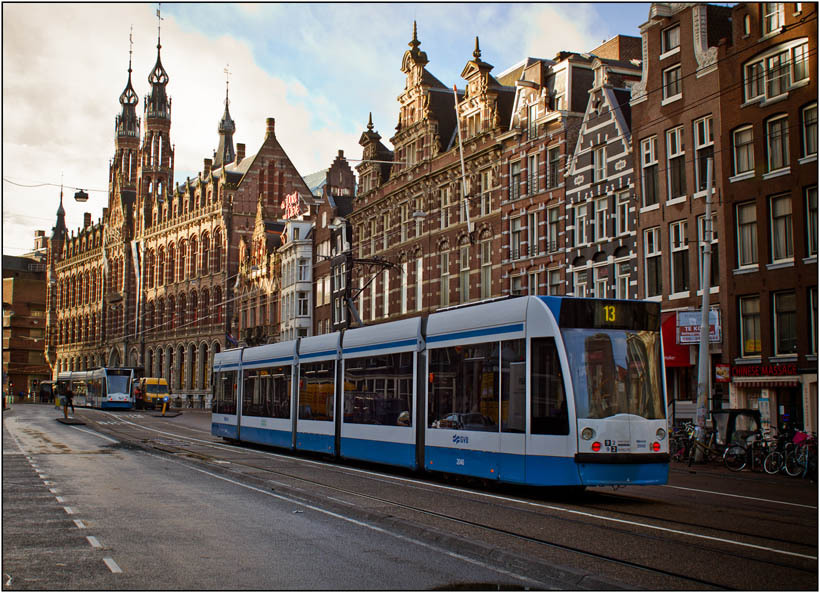
The city is very nice, but there is always something that is against the usual traditions in Russia. After a couple of days you get used to it - how you get used to outdoor advertising in Moscow - and the tolerance of local residents begins to amaze. They are generally very calm.
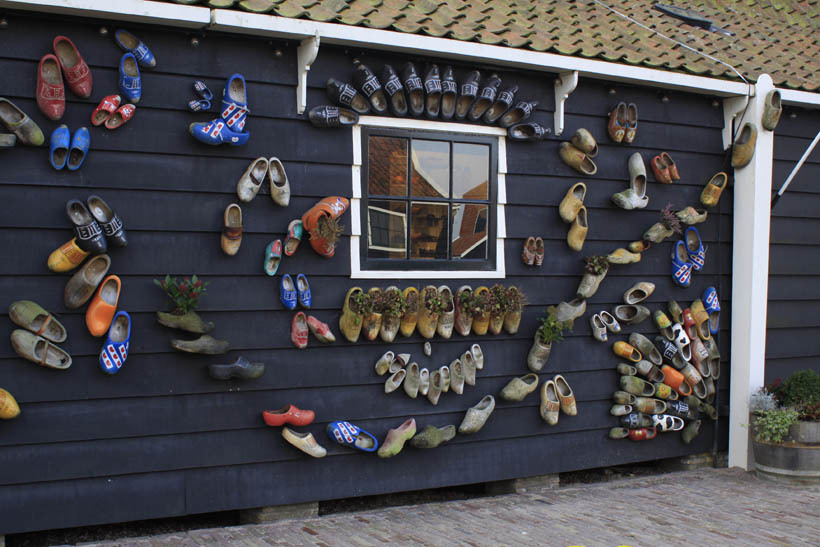
Klomp is a symbol of the city.
Local people are very, very friendly, always ready to help and answer. They speak almost perfect English. Bus drivers greet you when you come in, very nice.
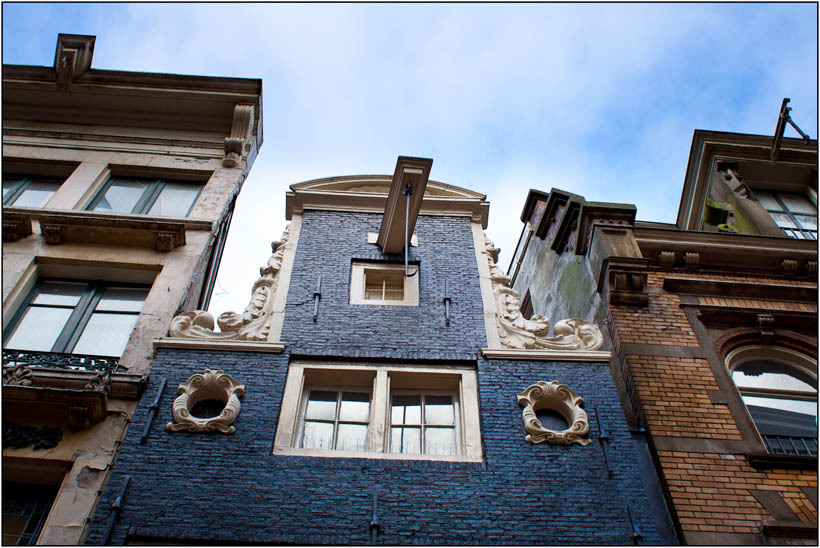
In one of the small towns nearby, we were lost. After about fifteen minutes of wandering we were met by a crowd that could be mistaken for football fans from afar. Powerful guys like that, a lot. We asked for directions. The guys showed in great detail, then thought about it - and just in case they did it.
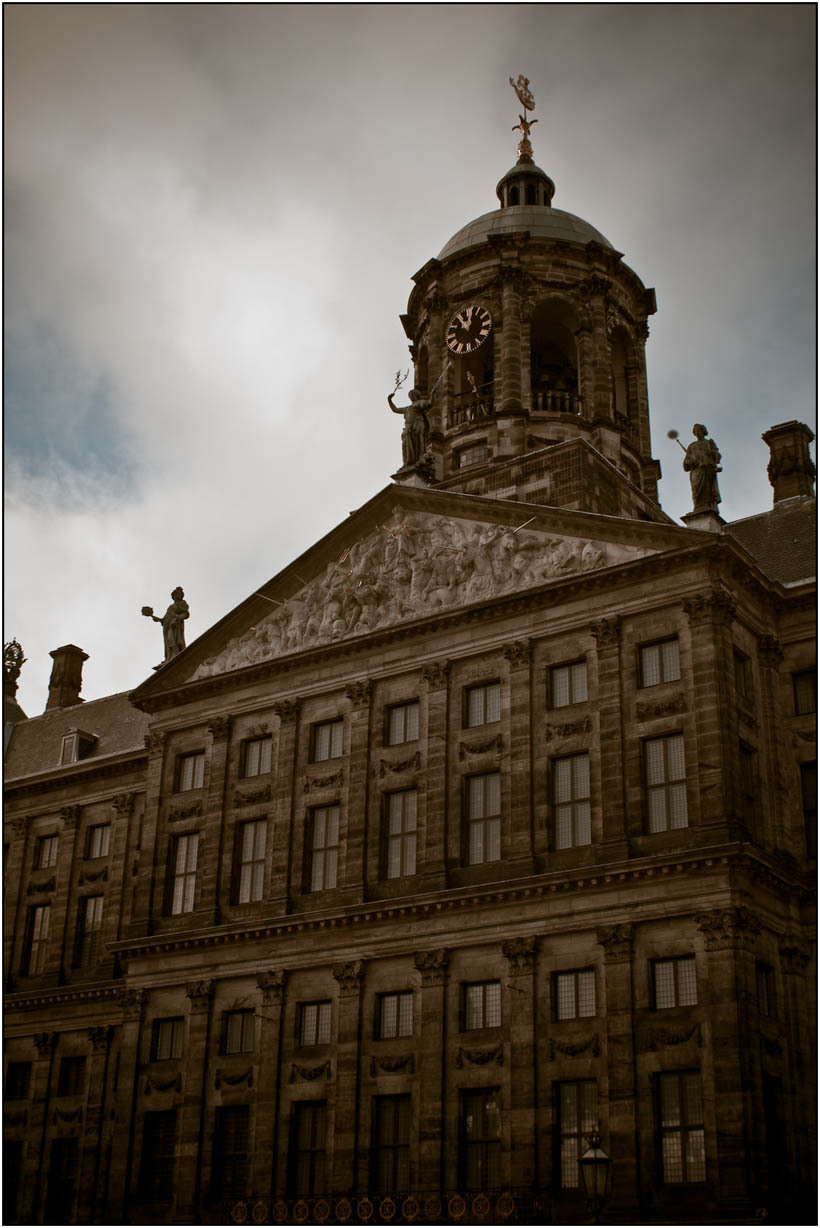
At ISE you need to make an invitation, or rather, pre-register. I fatally forgot this valuable piece of paper, which is why I almost hit the 100 euro entrance fee. In this case, I advise you to find friends colleagues / employees from manufacturers who take part in the exhibition, they have their own secret how to spend a partner at the exhibition for free. Wardrobe - another three euros, but we left jackets on the stands of friends. The admin sweater helps a lot - the wind from the river in the city is almost the same as the cold corridor of the data center, and it’s cool in places in the pavilions.
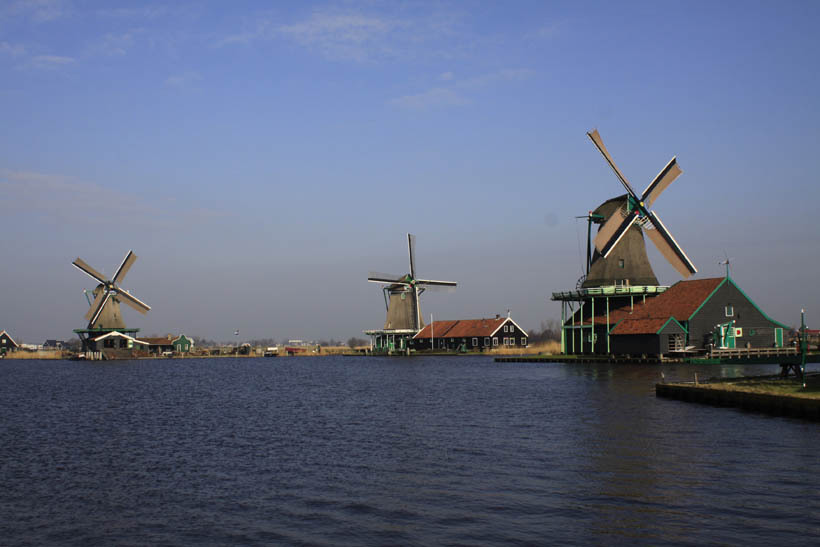
If you are interested in visiting the entire exhibition, you must come to the opening and from the far edge, walk row by row. Speaking of walking, my advice is to take comfortable shoes, since you will have to walk a lot, the pavilions are huge, sometimes you have to go around them several times a day, from meeting to meeting. The same applies to the city of Amsterdam. The city itself is not big, all the most interesting, as usually located in the center, but it is usually historical, therefore it is laid out with uncomfortable paving stones. Also, regarding the exhibition, I advise you to draw up a program for yourself in advance - master classes or special presentations in the spirit of “here is our stand with a screwdriver, and now he will disassemble your phones and collect them back with closed eyes.” On the detour, three days pass unnoticed. We usually come as a team, each goes around his own site,
Something like that. Now you have visited ISE.
